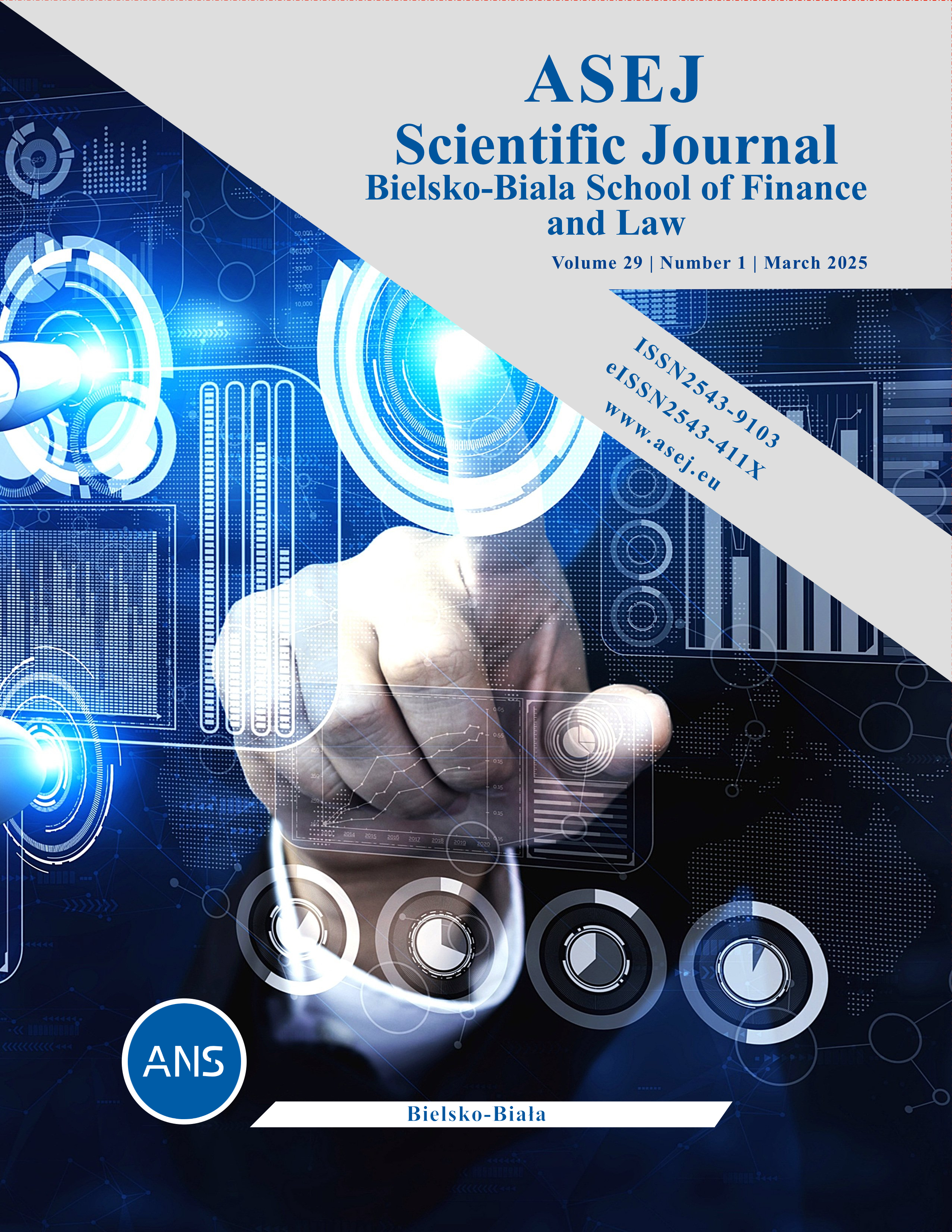Abstrakt
The digitalization of the economy has many positive aspects, affects competitiveness and economic efficiency, but also creates challenges for companies and organizations. Business operates in a global environment and at the same time in countries with different progress levels of digital tools. This, in turn, affects the different levels of cybersecurity that companies can provide - depending on the level of development, field of activity, as well as on which market participants build the supply chains. The number of cyber attacks is growing in different countries, so learning new approaches, improving the legislative framework, and making management decisions to build cyber resilience are important. The authors have researched the laws and programs related to cybersecurity in force and what solutions are offered by scientists in this field. By surveying the businesses, it was found out what methods of cybersecurity are used by companies in Ukraine, what are the obstacles to implementation, and what consequences were observed after cyber attacks
Bibliografia
Boyko V.D., Vasylenko M.D., Kukharenko S.V. Cybersecurity in the EU and member states: genesis and problems of its improvement. Informacijna bezpeka lyudyny, suspilstva, derzhavy 2019, № 3, pp. 57-69. Business.diia. Available online: https://business.diia.gov.ua/history-of-success/zakhyst-kompanii-vid-kiberzahroz-bezoplatni-posluhy-dlia-ukrainskoho-biznesu (accessed on 08.01.2025).
Castro J-P. Cyber Resilience - The Learning Phase of the Cybersecurity Compass Framework. Blog Trend Micro 2025. Available online: https://www.trendmicro.com/en_us/research/24/h/cyber-defense-strategy-framework.html (accessed on 15.01.2025)
Chornopyska N., Slobodzyanyk R. Digitalising supply chains: technology security or security technology. Marketing and logistics in the management system: challenges of digital globalization (in memory of Professor Yevhen Krykavskyy): abstracts of the XV International Scientific and Practical Conference, Lviv, Ukraine, 17-18 October 2024, pp. 443-444. DIIA. Available online: https://business.diia.gov.ua/finance/program/programa_es_cifrova_evropa_2021_2027 (accessed on 12.01.2025). EU4Digital. Available online: https://eufordigital.eu/uk/discover-eu/the-eu4digital-initiative/ (accessed on 14.01.2025).
Fediyenko O.P. European experience in legislative support for strengthening cyber resilience. Informaciya i pravo 2024, № 2(49), pp.178-189.
Galushko O., Seliverstova T. Cybersecurity in supply chain management (SCM). Naukovyy visnyk DSUIA. Special edition № 2. Derzhava i pravo v umovah vijskovogo stanu, 2022, pp.537-542. Global Cybersecurity Index 2024, 5th Edition. Available online: https://www.itu.int/en/ITU-D/Cybersecurity/Documents/GCIv5/2401416_1b_Global-Cybersecurity-Index-E.pdf (accessed on 08.01.2025).
Halgamuge M. N. Leveraging Deep Learning to Strengthen the Cyber-Resilience of Renewable Energy Supply Chains: A Survey IEEE Communications surveys & tutorials, third quarter 2024, vol. 26, №3, pp. 2146–2175. IT Ukraine Association. Available online: https://itukraine.org.ua/ukrayinskij-rinok-kiberbezpeki-zris-u-chotiri-razi-za-visim-rokiv/ (accessed on 08.01.2025).
Jazairy A., Manuj I., Goldsby T.J. Cyber risk management strategies and integration: toward supply chain cyber resilience and robustness. International Journal of Physical Distribution & Logistics Management 2024, №54,11, pp.1-29.
Kostromina M.O., Garnatko L.O. Cyber resilience and cybersecurity: what's the difference. Suchasnyy zakhyst informaciyi 2022, №4 (52), pp.71-75. Logist.fm. Available online: https://logist.fm/news/u-2025-roci-pochnut-diyati-novi-reglamenti-kiberbezpeki-u-logistici (accessed on 15.01.2025).
Myronova M. Analysis of the development of the digital economy in the world and in Ukraine. Mizhnarodnyi naukovyi zhurnal "Internauka". Seriia "Ekonomichni nauky", Shevchenko Scientific Society, Economic collection 2022, vol. 68, pp. 93–101. NISS. Available online: https://niss.gov.ua/publikatsiyi/analitychni-dopovidi/ataky-cherez-lantsyuzhky-postavok-formuvannya-stratehichnoyi (accessed on 11.01.2025). NIST. Available online: https://www.nist.gov/ (accessed on 14.01.2025). PROIT. Available online: https://proit.ua/63-it-orghanizatsii-stali-zhiertvami-atak-na-lantsiuzhki-postachannia-pz-za-ostanni-dva-roki-opituvannia/ (accessed on 12.01.2025).
Reynolds S. Examining the Challenges and Opportunities of Supply Chain Digitalization: Perspectives from Industry Leaders. Preprints 2024, pp.1-12. RNBO. Available online: https://www.rnbo.gov.ua/files/%D0%9D%D0%9A%D0%A6%D0%9A/2024/Cyber%20digest_Mar_2024_UA.pdf (accessed on 15.01.2025).
Sanni B. Impact of Cyber-resilience on E-supply Chain Performance and Operational Continuity. Research gate 2024, pp.1-10.
Sazid R, Ullah Ibne Hossain N., Govindana K., Nurf F., Bappy M. Assessing cyber resilience of additive manufacturing supply chain leveraging data fusion technique: A model to generate cyber resilience index of a supply chainCIRP Journal of Manufacturing Science and Technology 2021, №35, pp. 911-928.
Tabansky L., Lichterman E. Progress: the sectoral approach to cyber resilience. International Journal of Information Security 2025, №24 (18), pp.1-11. WEZOM. Available online: https://wezom.com.ua/ua/blog/kiberataki-na-lantsyug-postavok-v-logistitsi-vpliv-ta-naslidki (accessed on 11.01.2025).
Yeboah-Ofori A., Swart C., Opoku-Boateng F, Islam S. Cyber resilience in supply chain system security using machine learning for threat predictions. Continuity & Resilience Review 2022, Vol. 4 No. 1, pp. 1-36. СISA. Available online: https://www.cisa.gov/ (accessed on 14.01.2025).

Utwór dostępny jest na licencji Creative Commons Uznanie autorstwa – Użycie niekomercyjne 4.0 Międzynarodowe.
Prawa autorskie (c) 2025 Nazar Hlynskyy, Oksana Dovhun

